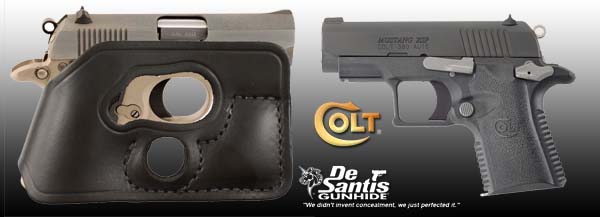Modern Gun School Special Content
By Philip Massaro
Primers are literally the spark that gets everything rolling in a cartridge. But there are some fine points about the component that must be understood to safely get the most out of the ammunition you're reloading.
No matter what, primers are the one piece of reloading gear that we reloader cannot create. In a pinch, we can cast our bullets from lead and wheel weights, reuse our brass cases numerous times, and those well versed in basic chemistry can even make crude black powder. But the primers leave us at a loss.
Now, I’m not trying to sound like a doomsday prepper, but I am trying to illustrate the importance of the those tiny little metal cups filled with the almost magical compound that makes things go bang.
Primers come in two sizes: large and small. Each of these sizes comes in two different designations, Large Rifle and Large Pistol, Small Rifle and Small Pistol. Large rifle and Large Pistol primers are 0.210” in diameter, while Small Rifle and Small Pistol primers are 0.175” in diameter, so you can visually see the difference between the sizes.
What you can’t see is the difference between rifle and pistol primers; and that difference is the hardness of the primer cup. Rifle primers have a much thicker cup than do pistol primers, to compensate for the huge difference in pressures between the two.
Each of the four types also come in a “magnum” variety, designed to give a hotter spark which will ignite the larger volumes of powder associated with magnum cases. It is important to read your reloading manual very carefully, as some standard cases will use a magnum primer when heavier loads are used.
“Benchrest” primers are marketed as being much more uniform in their construction. If you find a difference when using them, so be it, but I’ve produced some very accurate ammunition with standard grade primers, and in the tens of thousands of rounds I’ve loaded, I can count the times a primer has failed on one hand.
Once your loads are developed, be careful switching brands of primers. There is a performance difference, albeit slight, between the brands, and this can have an effect on pressure levels and accuracy. Where one powder/bullet combination proved safe with primer X, it may generate dangerous pressures with primer Y.
If you do need to switch primers (and this is mostly due to unavailability of your chosen brand), you should start load development again with a lesser powder charge, and build up to the previous load, watching for high pressure signs (cratered primers, difficult extraction, etc.) and verifying that the change hasn’t degraded your accuracy.
And one other note: be very careful to keep your primers in their original packaging and containers. Once they’ve been jumbled up, in is not only impossible to visually identify whether or not they are pistol, rifle, benchrest, magnum, or what have you.
I also make good use of a primer tray when installing primers in my resized cases. The little grooves keep the primers where I put them whilst I’m priming cases, and prevents them from rolling off the bench and onto the floor, where they inevitably roll into every dark corner and crack and crevice they can find their way into!



